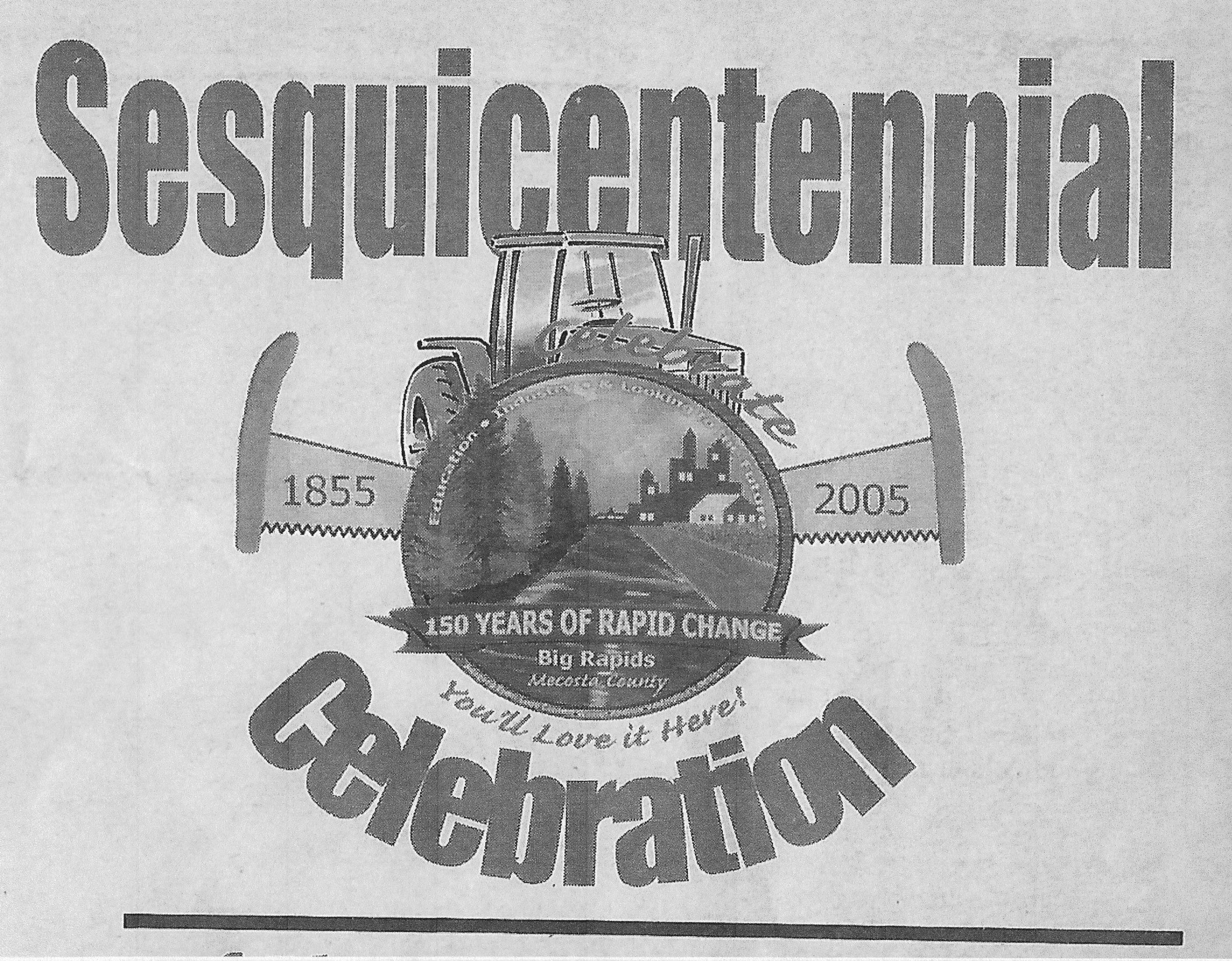
Part I - Agriculture, a supplement to the Big Rapids Pioneer Newspaper. Used with permission.
MECOSTA COUNTY FAIR
When the Mecosta County Agricultural Fair site --20 acres of land on West Avenue in Big Rapids -- was purchased for $3,000 from the Sisters of Mercy Order in June 1886, no one was sure how large the annual event would grow.
For one week in July each year, thousands of area and state residents flock to Big Rapids for the fair, which features a variety of events, including harness races, livestock shows, an auction, a rodeao, a demolition derby, several exibits, a midway and more.
The Mecosta County Agricultural Fair Association organizes the fair; and members of the Mecosta County 4-H participate in the animal exhibits.
The history of the fair dates back to Oct, 5, 6, and 7th, 1886, when the first Mecosta County Agricultural and Industrial Society's Fair was held.
Early accounts suggest approximately 25 to 30 area "influential citizens, a respresative or two from Stanwood and Hon. W. T. Jones of Morley" gathered to organize the event in May 1886.
O.D. Glidden was elected chairman, and H.M. Trussell was named secretary.
Also, Dr. Burkart, Herbert Ladner, W.E. Overton, J.T. Escott and H.M. Trussell were appointed to search for a fair site.
An additional meeting was held on May 15, 1886, when a committee on bylaws and constitution was established, and later in May 17, items were listed in the constitution of "Our Agricultural Society," accounts said.
Besides the West Avenue site, officials also considered purchasing, "the Barstow site," in the northern part of town, and "one belonging to the Warren estate," just south of Big Rapids. However, officials favored the fair's current site.
Switching the date from Sept. 15 to days in October, organizers made final preparations for the event, which brought in a total of $980. Apparently the weather, along with other problems, caused planners to change the dates to Oct. 5,6 and 7th.
On Sept. 29, a list of Special Premiums appeared in the Pioneer, which possibly served as the first "fair book."
On Oct. 5, 1886 "excursions fares on the train brought the Hon. George L. Yaple, the Fusion candidate for Governor of Michigan, Dr. A. W. Nicholas of Greenville and W.D. Fuller of Newaygo to the fair to speak on the first day.
Other state guest speakers followed the next day, including Republican candidate for Governor of Michigan Hon. Cyrus G. Luce, Sen. T.W. Palmer of Detroit and Gen. B.M. Cutcheon of Manistee.
Early exhibits included various livestock, including sheep, swine, cattle and poultry, as well as steam machinery, buggies and wagons.
Other important events in fair history include:
The first County Agricultural Agent for Mecosta County Paul Smith founded the first 4-H Club program in the county in 1918; however, from 1921 to 1926, there was very little evidence of any 4-H work being done, according to a Pioneer article in 1986 Centennial Fair Edition. The 4-H program was revived by new County Agent E.E. Twing. In 1930, the Barryton Calf Club had 60 members. It was recognized as Michigan's largest 4-H Club. By 1934, area club members began exhibiting their livestock at the fair.
The 1887 fair book was 60 pages and contained 22 advertisements for area businesses. The book contained an ad purchased by Michigan Cigar Company, the oldest known local firm to have support the County fair. By 1894, the book changed sizes, pinted 48 pages and had 37 advertisements. Today, the book contains more than 85 pages and is published by the Pioneer Group.
Buildings for the first fair included a 75 by 75 foot floral hall, a small granstand on the ground's east side and an office for the secretary and treasurer between the floral building and the northern fence. Later, 20 sheds were added to the site.
Return to Home Page

